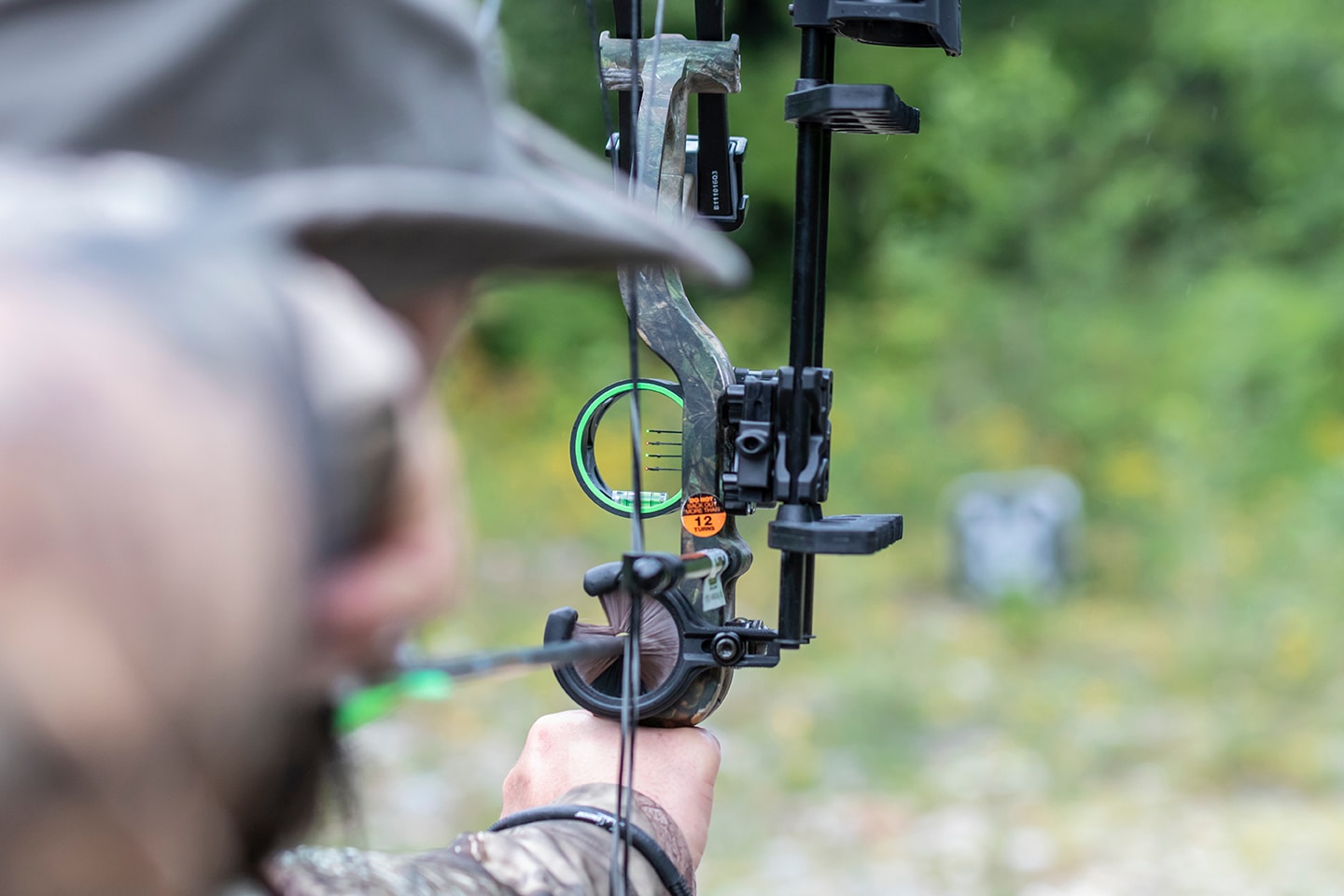The compound bow has been around for several decades now. While the initial version of the bow was pretty basic, modern versions are quite complex and advanced. They have multiple aspects that one needs to take into account to master and to have an enjoyable experience using them. A good example of such an aspect is the draw weight. This post will teach you everything you need to know about the compound bow draw weight including how to adjust it.

What is the draw weight?
To master the draw weight aspect of your compound bow, you first need to understand what it is. The draw weight of a bow is the force required to pull its string from the resting position to the fully drawn position.
Why it is important to know how to adjust the draw weight of your compound bow?
It is crucial to know how to adjust the draw weight of a bow. Because knowing this will help you to adjust the draw weight of your bow, which is something you want to do if you want to master the bow. A small change in the draw weight of a bow can significantly affect its functionality. Specifically, it can affect the following things:
Effort: A change in bow draw weight will affect the effort one has to put in to shoot it. An increased draw weight will make the bow require more effort to draw, while a reduced draw weight will make the bow require less effort to draw. In other words, increased draw weight makes a bow more difficult to shoot, while reduced weight makes a bow easier to shoot.
Power: While reduced draw weight makes a bow easier to shoot, it also reduces the maximum power of the arrows it shoots. Therefore, it is not wise to try and adjust the draw weight of a compound bow downward. What you want to do is to adjust the draw weight to a weight that is high but not too high. This will ensure your arrows are powerful and at the same time, your bow is not difficult to use.
Range and accuracy: Increasing the draw weight of your bow will increase its power. This will automatically increase its range and accuracy. Nevertheless, when increasing your draw weight for range and accuracy, you need to ensure you do not go too high. Because doing this will make your bow difficult to operate.
How to adjust draw weight
Follow the steps below to adjust the draw weight of your compound bow.
1. Gather the right tools
To successfully adjust the draw weight of your bow, you need to gather the right tools. These include an Allen wrench and a draw scale.
You need an Allen wrench to unfasten and then fasten the limb bolts (the bolts that maintain string tension). Most of the limb bolts are hexagonal in nature and this is why you need an Allen wrench. Some compound bows have limb bolts that can be unfastened and then fastened using a simple screwdriver. So check whether the bolts on your bow will require an Allen wrench or a screwdriver before getting one.
You need a draw scale to determine the current draw weight of your compound bow. You also need it to check the draw weight of your bow after adjusting it. A digital draw scale is the best one to use for accuracy but you can also use the old-school spring scale.
2. Measure the current draw weight
After gathering the right tools for the job, you need to measure the current draw weight of your bow. This measurement is important for use as a reference after you adjust the draw weight. To measure the current draw weight of your bow, hook its string’s D-shaped loop on the scale. Then pull the bow down until it is in its full-draw position. Record the weight shown on your scale.
3. Find out the maximum/minimum limb weight rating
Every bow has a limb weight rating. Find out the limb weight rating of your bow. It is usually in pounds and indicated on a sticker. Check the inner part of the limb for the sticker. If you do not find a sticker or limb weight rating, check the website where you bought the bow for the weight rating. After finding the limb weight rating, note it down somewhere.
4. Find the limb bolts
Limb bolts are often close to the center in compound bows. They are called limb bolts because they attach the limbs (arms) to the riser (the central part). And they are usually located in big circular knobs. You need to find the limb bolts of your bow because you need to adjust them to tweak your bow’s draw weight.
5. Unfasten the limb locking screws
Many compound bows usually have limb-locking screws in addition to the limb bolts. You need to unfasten them to adjust the limb bolts.
6. Fasten/unfasten the limb bolts to adjust the draw weight
After unfastening the limb locking screws, you can move the bow limbs (arms) by fastening/unfastening the limb bolts. Moving the bolts and the arms will affect the tension on the draw string. Fastening the bolts will increase string tension and, therefore, increase draw weight. Unfastening the bolts will lower string tension and, therefore, lower draw weight.
7. Fasten the limb locking screws
Once you have adjusted the bolts to increase or lower the draw weight, you have to lock the limb locking screws. Once you do this, measure the draw weight. Is it what your desire? If yes, you have successfully adjusted the draw weight of your bow. If not, you should adjust the bolts again until you get to your desired draw weight.

